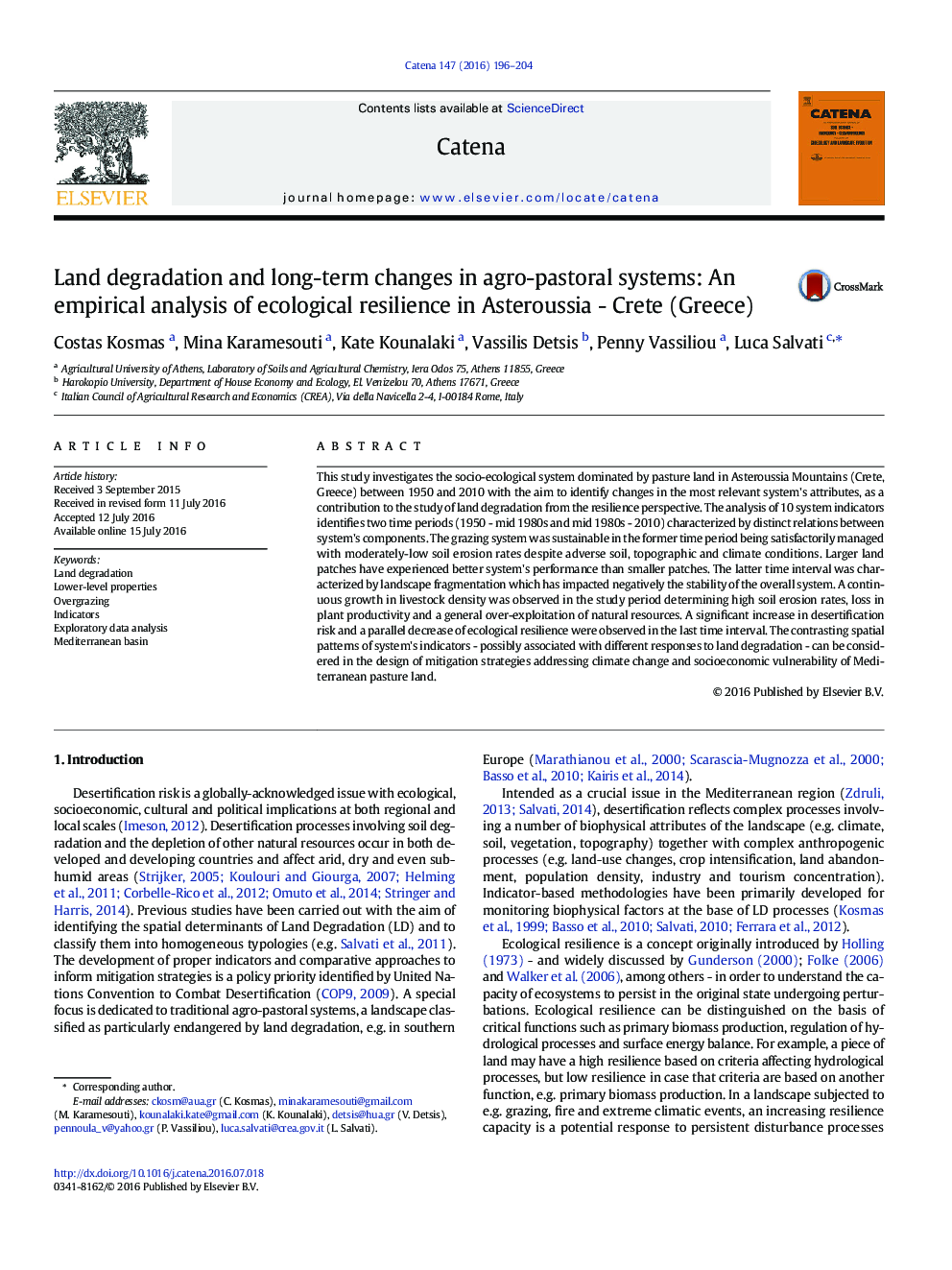| Article ID | Journal | Published Year | Pages | File Type |
|---|---|---|---|---|
| 6407707 | CATENA | 2016 | 9 Pages |
Abstract
This study investigates the socio-ecological system dominated by pasture land in Asteroussia Mountains (Crete, Greece) between 1950 and 2010 with the aim to identify changes in the most relevant system's attributes, as a contribution to the study of land degradation from the resilience perspective. The analysis of 10 system indicators identifies two time periods (1950 - mid 1980s and mid 1980s - 2010) characterized by distinct relations between system's components. The grazing system was sustainable in the former time period being satisfactorily managed with moderately-low soil erosion rates despite adverse soil, topographic and climate conditions. Larger land patches have experienced better system's performance than smaller patches. The latter time interval was characterized by landscape fragmentation which has impacted negatively the stability of the overall system. A continuous growth in livestock density was observed in the study period determining high soil erosion rates, loss in plant productivity and a general over-exploitation of natural resources. A significant increase in desertification risk and a parallel decrease of ecological resilience were observed in the last time interval. The contrasting spatial patterns of system's indicators - possibly associated with different responses to land degradation - can be considered in the design of mitigation strategies addressing climate change and socioeconomic vulnerability of Mediterranean pasture land.
Related Topics
Physical Sciences and Engineering
Earth and Planetary Sciences
Earth-Surface Processes
Authors
Costas Kosmas, Mina Karamesouti, Kate Kounalaki, Vassilis Detsis, Penny Vassiliou, Luca Salvati,
